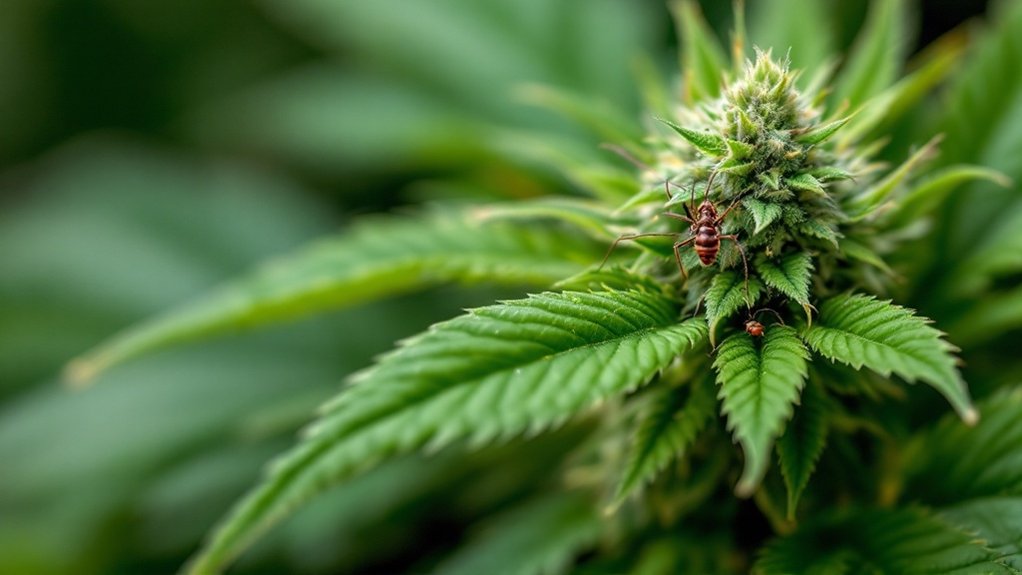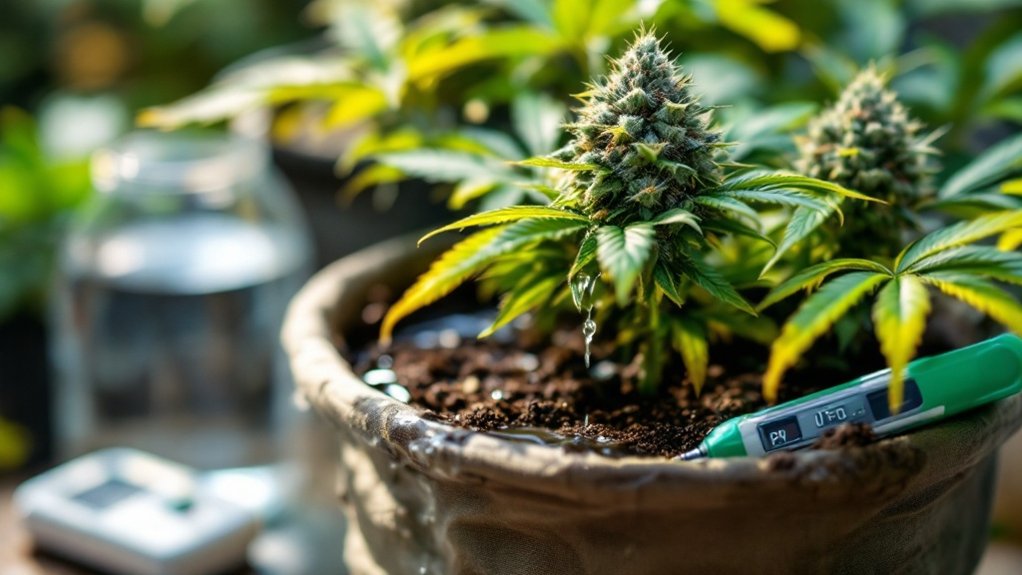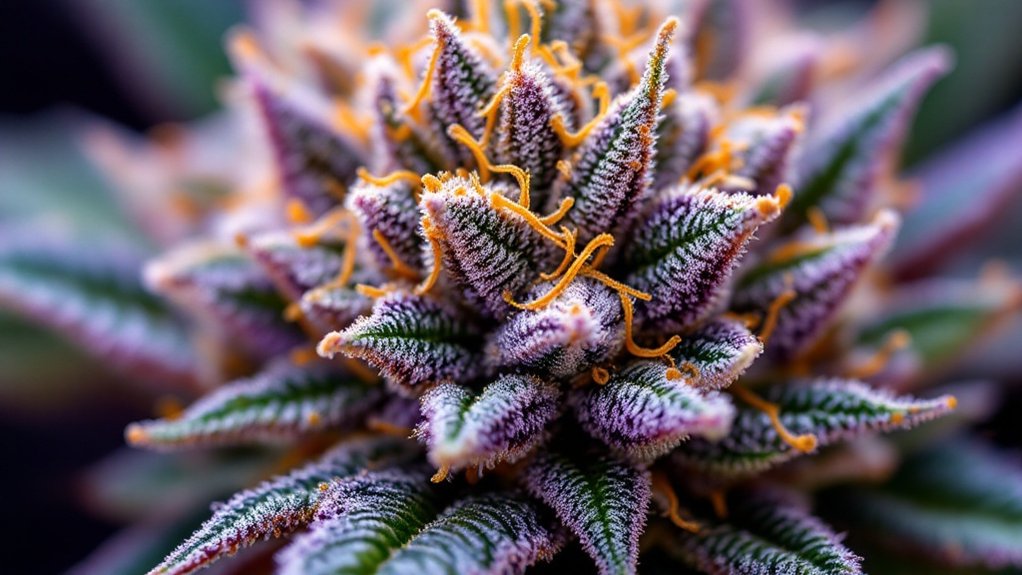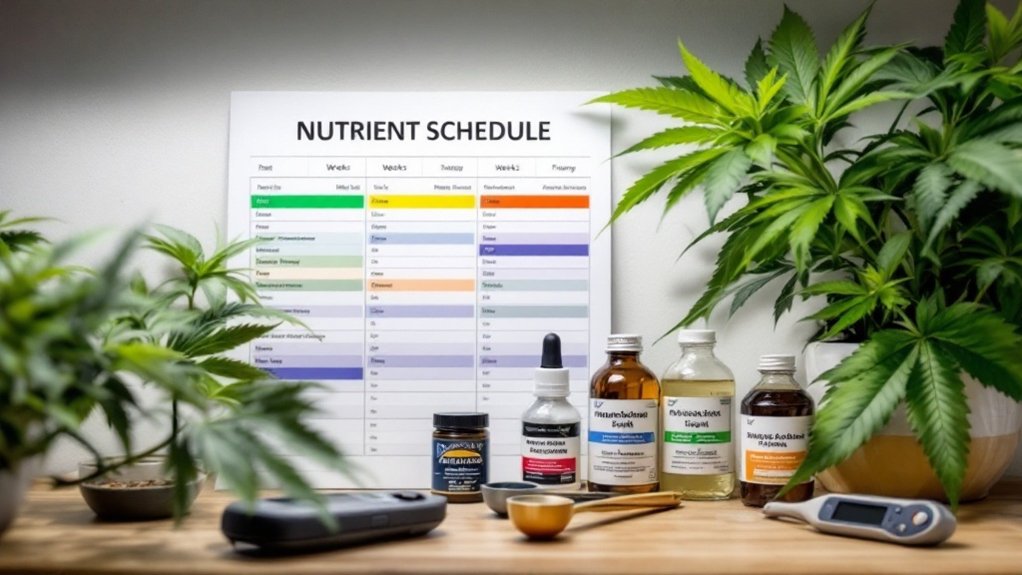Spider mites during cannabis flowering require immediate attention using non-toxic methods. Growers can spray plants with cold water to dislodge pests, introduce beneficial predators like Phytoseiulus persimilis, or apply flower-safe treatments such as diluted neem oil or insecticidal soaps. These applications should target leaf undersides where mites congregate. Maintaining proper environmental conditions and quarantining new plants helps prevent infestations. Implementing an integrated pest management approach offers the most thorough protection for sensitive flowering plants.
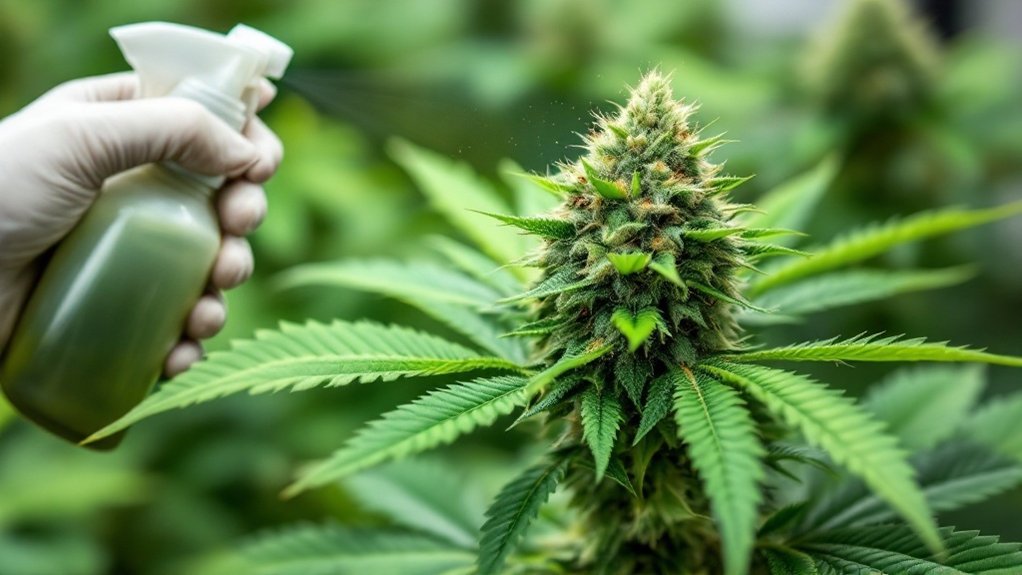
Detecting spider mites early can mean the difference between saving a plant and losing an entire crop. These tiny arachnids, measuring less than 0.5 mm as adults, produce distinctive webbing on leaves and can double their population in as little as three days. Cannabis growers should watch for yellow or white speckling on leaves and examine the undersides with a magnifying glass for mites and eggs. This vigilance is especially important during the flowering stage, when plant health directly impacts final harvest quality. Additionally, ensuring that plants receive adequate micronutrients is essential for maintaining their overall vigor and resilience against pests.
Physical removal represents the first line of defense against spider mites. Growers can spray leaves with cold water to dislodge mites and their webbing, followed by wiping down foliage with a wet sponge. Heavily infested leaves or branches should be promptly removed, bagged, and disposed of outside the grow area to prevent reinfestation. Indoor growers can significantly reduce infestation risks by implementing clean room protocols that prevent contamination from outside sources. Spider mites can cause extensive damage by piercing plant tissue and extracting cellular fluids, leading to stunted growth and reduced yields.
Increasing airflow throughout the growing space creates conditions less favorable for spider mite reproduction while supporting plant health.
Biological control offers an effective, residue-free approach during flowering. Predatory mites actively hunt spider mites, while ladybugs and lacewing larvae provide supplementary control. These beneficial organisms work most effectively when introduced before infestations become severe and require specific temperature and humidity conditions to thrive. Regularly monitoring plants for signs of stress from nutrient deficiencies can also help in early detection of potential pest pressures.
Rotating predator species helps prevent resistance development.
Natural and organic sprays provide another intervention option. Neem oil disrupts mite feeding and reproduction, while insecticidal soaps break down mite cell membranes on contact. Spinosad, derived from soil bacteria, offers effective control with minimal environmental impact.
Essential oil blends containing rosemary, peppermint, or clove oil demonstrate both repellent and toxic effects on mites. When applying these treatments during flowering, growers should avoid direct contact with buds to prevent residue accumulation.
Chemical miticides should be approached cautiously during flowering. While potentially effective, these products may leave unwanted residues on buds. OMRI-listed products remain preferable for organic cannabis cultivation, and following label directions regarding pre-harvest intervals is essential.
An integrated pest management approach combining physical removal, biological controls, and carefully selected organic treatments offers the most sustainable strategy. This thorough approach, coupled with preventative measures like quarantining new plants, maintaining ideal environmental conditions, and regular cleaning, provides effective spider mite management during this vital growth phase.
Frequently Asked Questions
Can Neem Oil Be Safely Used During Late Flowering?
Neem oil is not recommended for use during late flowering stages. The residues can remain on buds, resulting in harsh, bitter taste profiles and potentially compromised cannabinoid production.
These residues may also present health concerns when combusted and inhaled. While neem oil serves as an effective organic pesticide during vegetative growth, applications should cease at least three weeks before harvest.
Alternative pest management strategies, such as insecticidal soaps or beneficial insects, offer safer options for late-stage flowering treatments.
How Long Do Spider Mites Remain After Treatment?
Spider mites can persist for 7-14 days after treatment despite apparent elimination.
Eggs remain viable for 3-5 days post-application, as most treatments don’t affect them, resulting in hatching cycles that require multiple interventions.
Hidden mites may survive in soil for up to 11 days, while dormant individuals can shelter in grow room crevices indefinitely.
Environmental factors like temperature and humidity greatly influence survival rates, with cooler conditions extending mite persistence through delayed reproductive cycles.
Will Spider Mites Affect the Taste of Harvested Buds?
Spider mites greatly impact the taste and quality of harvested cannabis buds. Their feeding damages plant cells and disrupts terpene production, altering the flower’s characteristic flavor profile.
Mite webbing, excrement, and dead bodies can remain on buds, introducing unpleasant musty or acrid notes to the final product. Additionally, the stress response triggered by infestations may cause plants to produce undesirable compounds that further compromise the natural aromatic qualities consumers expect from healthy cannabis.
Can Spider Mites Develop Resistance to Repeated Treatments?
Spider mites readily develop resistance to repeated treatments, particularly chemical controls.
This adaptive capacity stems from their rapid reproductive cycle, which enables genetic mutations to spread quickly through populations. When the same active ingredient is used continuously, resistant individuals survive and reproduce, passing these traits to subsequent generations.
Resistance development is accelerated in controlled environments like indoor cannabis grows, where natural predators are absent and selection pressure is intense.
Rotating different control methods and incorporating biological agents can help mitigate this evolutionary response.
What Temperature and Humidity Levels Discourage Spider Mite Infestations?
Spider mites thrive in warm, dry conditions and are discouraged by environmental adjustments outside their comfort zone.
Maintaining temperatures between 68-77°F (20-25°C), rather than their preferred 80°F, considerably slows their reproduction rate and development. Relative humidity levels of 55-60% inhibit their proliferation, as these pests prefer drier environments around 20% humidity.
The combination of slightly cooler temperatures and higher humidity creates unfavorable conditions that limit spider mite population growth while remaining suitable for plant health.
